Summary
- Winter eBike riding is fun, but it comes with challenges. Cold weather drains eBike batteries quicker, surfaces are slippery due to snow and ice, and visibility is worse as well.
- Wear layered thermal clothing, consider buying an extra battery or an eBike with an extended range option, and take along emergency tools like a first aid kit for longer or more remote rides.
- Before winter, check your battery health, tire pressure, brake responsiveness, electronic functionality, and overall bike integrity. Store your battery indoors between rides to prevent draining.
- Understand your eBike's IP rating to gauge its resistance to both dirt and water. All Surface 604 models come with an IP65 rating, providing significant protection against moisture and dust.
- For better traction, monitor your tire pressure regularly and consider slightly reducing it. Our fat-tire eBikes accommodate a wider range of tire pressures to help you improve your grip on winter rides.
Winter can be tough on eBikes—but with the right preparation, you can enjoy smooth rides even in cold weather. Here at Surface 604, we make high-performance eBikes capable of carrying you through every season, so here’s our guide to getting yours ready to handle the snow and ice with ease.
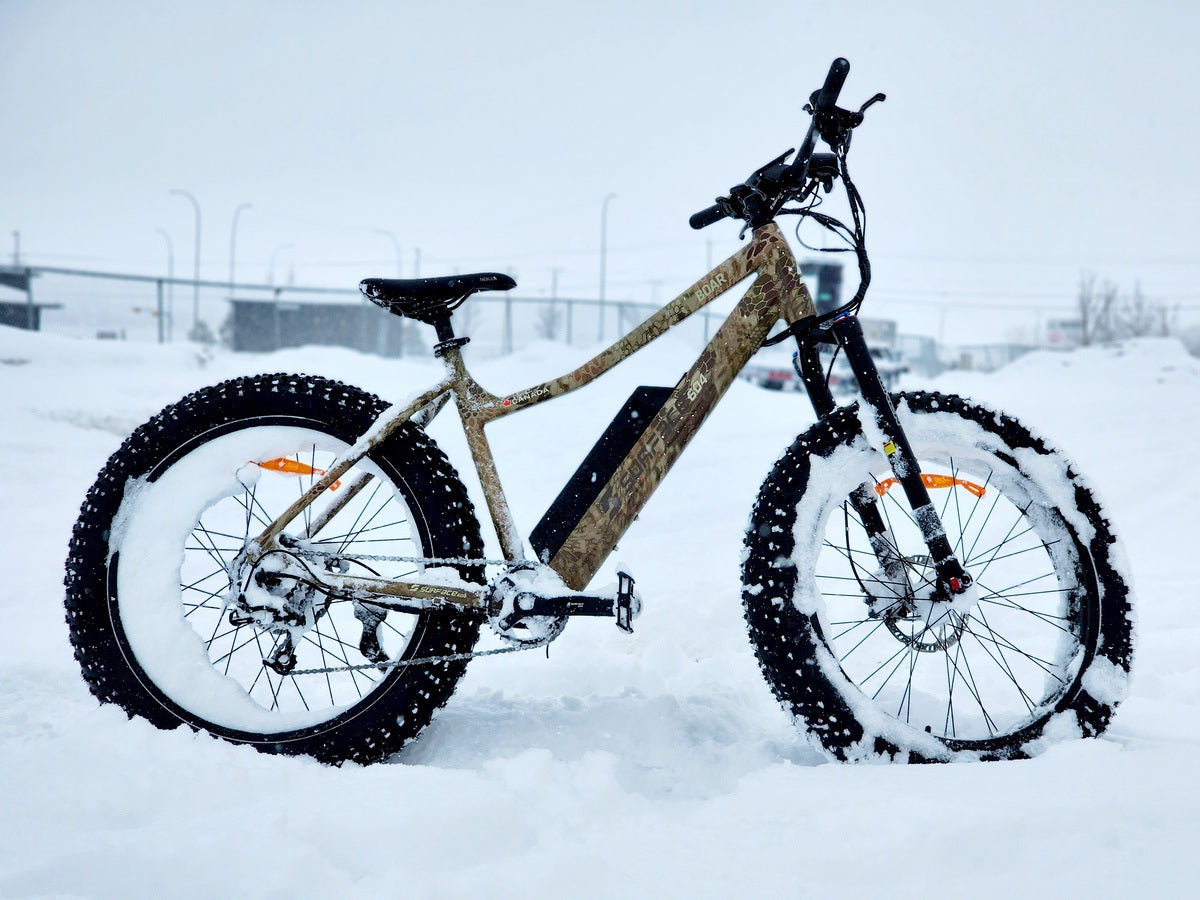
Winter Riding vs. Summer Riding
Riding your eBike in the winter can be exhilarating, but it isn’t exactly the same as going for a summer cruise. To maximize your comfort and safety, you’ll want to be familiar with the unique challenges winter can bring. These include:
- Below-Freezing Temperatures: Cold drains eBike batteries and body heat faster. Plan shorter rides, pack water and snacks, and dress warmly.
- Slippery Riding Surfaces: Snow and ice reduce grip. Adjust your tire pressure and ride cautiously, giving yourself extra time to brake.
- Reduced Visibility: Winter means less daylight, more fog, and the possibility of blowing snow. We recommend wearing bright colors, eye protection, and making sure your bike is equipped with powerful lights.
Essential Winter Riding Equipment
Here’s a quick checklist of things you should pack for your winter rides:
- Thermal Clothing: Layered clothing, preferably moisture-wicking and in bright colors, to keep your body warm, dry, and visible.
- Boots & Gloves: To keep your extremities warm and your reaction speed sharp.
- A Spare or Extended Range Battery: Cold conditions drain eBike batteries faster, so it's wise to carry a backup. Our eBikes are available with extended-range batteries that can give you more riding time in any season.
- Tire Pressure Gauge: The cold can affect your tire pressure, so you may want to check it periodically on longer rides.
- Portable Air Pump: For on-the-go pressure adjustments, especially if you've let some air out for better traction.
- First Aid Kit: Always be prepared for unexpected injuries, especially in slippery conditions.
- Water and Snacks: Riding in cold weather can dehydrate you faster and burn more calories.
- Portable Multi-Tool: For any unexpected adjustments or minor repairs.
- Emergency Whistle: Useful to signal for help if you find yourself in a tough situation.
- Clear Lens Glasses: To protect your eyes from cold winds, snow, or rain without darkening your vision.
- Waterproof Panniers or Backpack: To store all your essentials and keep them dry. You can find panniers and other parts for our eBikes here.
Giving Your eBike a Pre-Season Check
Given the unique challenges of winter riding, it’s essential to make sure your ride is in great shape before the season begins. Either take your eBike to your nearest Surface 604 dealer for professional service, or give it a comprehensive check yourself that includes the following areas:
- Battery health and charge capacity
- Tire condition and pressure
- Brake responsiveness and wear
- Overall electronics functionality
- Chain and cassette cleanliness
- Tightness of nuts & bolts (especially in high-stress areas)
Below, we walk you through each of these areas and provide steps you can take to make sure they’re in good condition:
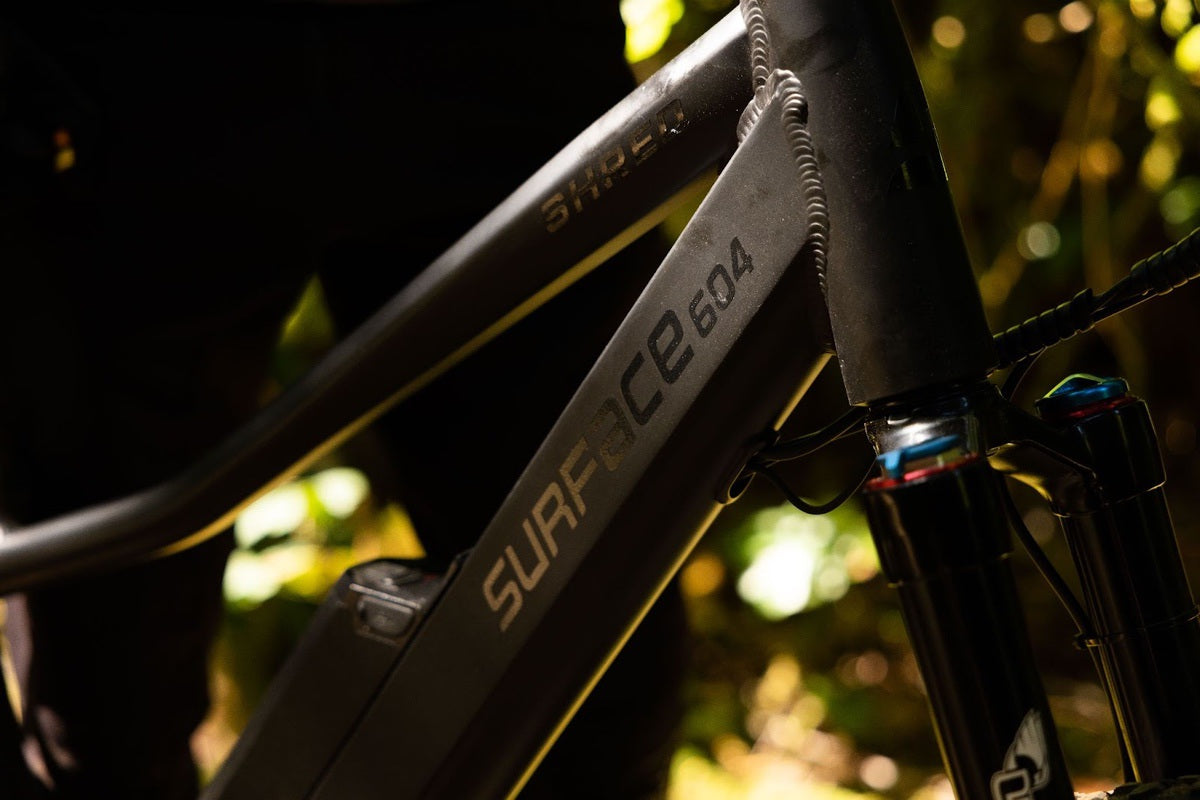
Winter Battery Maintenance
Since the cold is tough on batteries, you’ll want to do the following:
- Always store your battery indoors between rides.
- If you’re not using your eBike for several days, keep the battery on a charger to extend its lifespan.
- Dirt and debris build up more easily when snow melts, so wipe the battery contacts periodically using a microfiber cloth to remove dirt between rides.
Cold-Weather Motor Care
Moisture, salt, and cold temperatures can all affect your eBike’s motor, so here’s how to keep it in shape until the spring thaw:
- Regularly inspect the motor for any signs of salt or moisture damage. If you see visible corrosion, take your eBike in for professional service as soon as possible.
- Use a mild soapy solution and a soft brush to clean the exterior of the motor every week or so during the winter. Ensure it's dried thoroughly afterward so that leftover water doesn’t freeze in the cold.
- While riding, try to steer clear of deep puddles or waterlogged areas.

Checking eBike Electronics
Winter has more moisture than other seasons due to the snow on the ground, so you’ll want to make sure your eBike’s electronics are protected. We don’t suggest tampering with any electronic equipment, but here are a few easy checks you can run to identify issues that might require professional attention.
- Before each ride, ensure all electronic systems, including the display, lights, and assist controls, are functioning correctly.
- Check all cables and wiring for wear and make sure they’re properly attached.
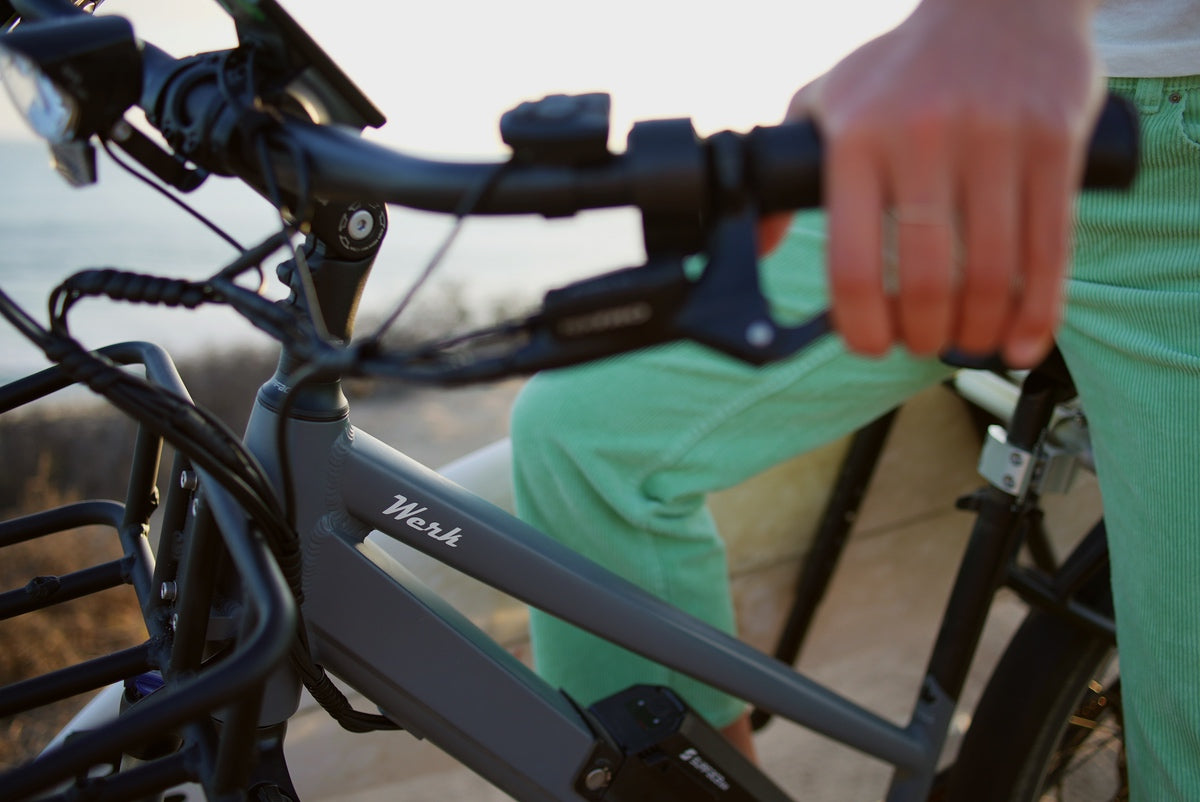
Winter Brake Prep
Cold weather makes your brakes feel more stiff as the metal inside contracts, while road salt and dirt from melting snow can make your pads and rotors dirty. Here’s how to clean and inspect them:
- Monitor brake pads for wear and replace them if they thin down to between 0.9 and 2.5 mm. You can use brake calipers from your local hardware or auto parts store to measure them.
- Clean the brake system using a warm soapy solution, focusing on discs and pads. A toothbrush or other hard-bristled brush can help you reach tight spots.
- Always test your brakes before riding in a controlled area like your driveway and make sure they give you enough stopping power.
Remember Your eBike’s Water Resistance
Not every eBike is built to withstand wet weather and other winter conditions, so you’ll want to consult your owner’s manual and determine the IP rating. IP stands for ingress protection and is a metric that shows how well your bike resists the elements. Here’s how it works:
- Every IP rating consists of two digits. The first digit represents the bike’s ability to withstand solid contaminants like dirt and mud, while the second digit indicates its ability to withstand liquids (like water).
- All Surface 604 models come with an IP65 rating. The “6” demonstrates a strong resistance to dirt, dust, and other solid particles, while the “5” represents a reasonably strong resistance to wet weather.
So what does that mean in a practical sense? Basically, a Surface 604 bike should be fine to cross streams and ride in the snow—but you probably don’t want to submerge the whole thing in water. It’s also a good idea to dry off your eBike after exposing any part of it to rain or snow so that you can help it last as long as possible without experiencing corrosion.
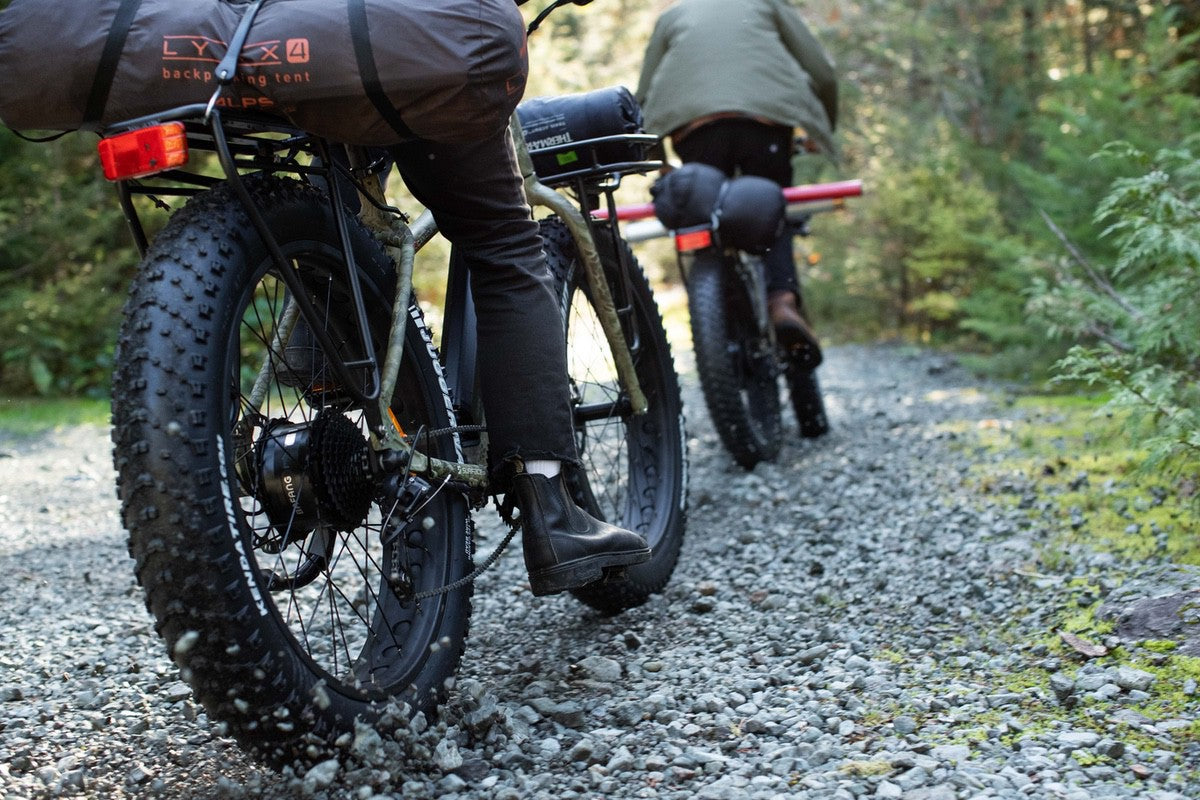
Adjusting Your Tires for Winter Traction
Finally, remember that winter conditions are slippery. Snow, ice, and slick road surfaces after the snow is melted or cleared can all reduce your eBike’s ability to grip riding surfaces if you aren’t careful.
Give your eBike better grip by taking these quick steps:
- Check tire pressure regularly. Consider reducing it slightly—by just a couple of PSI—for better traction.
- Fat-tire eBikes can accommodate a wider range of tire pressures, allowing them to achieve better grip on snow (as well as sand and other challenging riding surfaces).
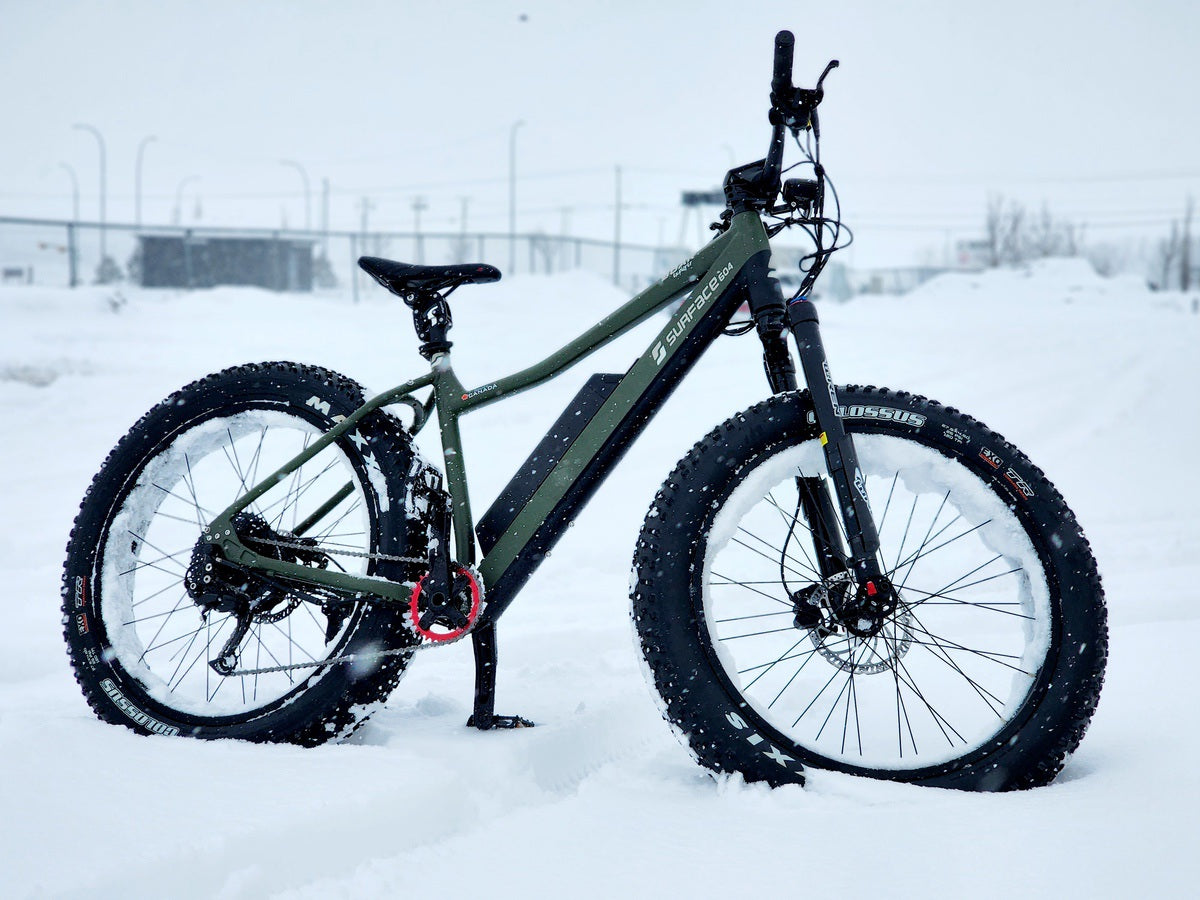
Find Winter-Capable eBikes from Surface 604
Finally, remember that not every eBike on the market is engineered with winter riding in mind. You can follow all of the advice above, but if your ride wasn’t designed to traverse snow or ice, you could still find yourself facing unnecessarily challenging—and potentially unsafe—conditions.
Surface 604 makes numerous models you can ride in cold conditions, but our fat-tire eBikes are among the best for keeping you stable and safe in winter weather. Here are two we recommend if you’re planning to ride year-round.
Surface 604 Boar Hunter
Price: $2,663 USD
Engineered with 4.5” Kenda Juggernaut fat tires that you can deflate down to 5 PSI for improved traction on tough terrain, the Boar Hunter also sports a high-torque, fat-bike-specific Bafang hub motor that peaks at 750W. Front and rear luggage racks are included for good measure, making this your ideal hunting or fishing companion—any time of year.
Surface 604 Boar Explorer
Price: $2,591 USD
A lighter and more streamlined fat-tire eBike, the Explorer uses 4.5” Maxxis Colossus tires and has 180mm Tektro hydraulic disc brakes that provide awesome stopping power, even on the slipperiest surfaces. A rear luggage rack and Büchel Shiny 120 LED headlight also ensure that you can carry extra winter emergency gear and maintain visibility in low-light conditions.
FAQs
Will reducing tire pressure risk flats?
A slight reduction won’t significantly increase risk—but you should avoid severely depleting the air in your tires unless you have a fat-tire eBike meant to accommodate low PSI.
How can I maintain a leather saddle in winter?
Use leather conditioner to keep it supple. For cushioned saddles, make sure to keep them dry and ice-free when storing your bike between rides.
How often should I take my eBike in for professional service?
Even with regular personal maintenance, it's a good idea to get your eBike professionally serviced at least once during the winter season, especially if you're frequently riding in challenging conditions. A mid-winter check by a professional can identify potential issues you can’t detect on your own and help you continue riding safely.
Do I need special lubricants for my eBike chain and components during winter?
Yes—winter-specific lubricants are recommended for cold and wet conditions. Standard lubricants might not offer the same protection in freezing temperatures and could become too thick or even freeze. Winter lubricants are designed to repel water, resist salt, and stay fluid in low temperatures, helping your chain and components operate smoothly.



Share:
Hub Drive vs. Mid-Drive Motors
Why the Boar Hunter Is the Best Hunting Electric Bike